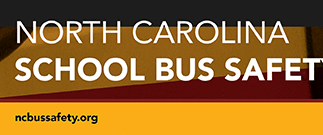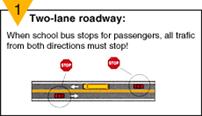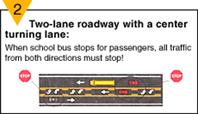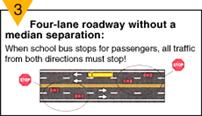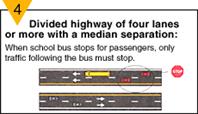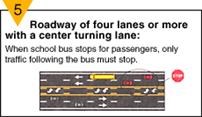Be a Better Driver in 2009
Most New Years resolutions revolve around improving health by dieting or exercising. A very simple resolution to improve your overall well being is to practice driving safer. The results are immediate. Not that you are a bad driver now, but one can always improve on the dangerous activity we engage in on a daily basis. Each trip taken in an automobile puts you at the highest risk for immediate injury or fatality of any other activity in your life.
Car Crash Stats:
There were nearly 6,420,000 auto accidents in the United States in 2005. The financial cost of these crashes is more than 230 Billion dollars. 2.9 million people were injured and 42,636 people killed. About 115 people die every day in vehicle crashes in the United States -- one death every 13 minutes.
Total Traffic Crashes In the United States |
2005 |
2004 |
2003 |
2002 |
2001 |
2000 |
1999 |
1998 |
1997 |
|
|
|
|
|
|
|
|
|
|
Fatal Vehicle Crashes |
39,189 |
38,444 |
38,477 |
38,491 |
38,862 |
37,526 |
37,140 |
37,107 |
37,324 |
|
|
|
|
|
|
|
|
|
|
Fatality Totals: |
|
|
|
|
|
|
|
|
|
Drivers |
27,472 |
28,871 |
26,779 |
26,659 |
25,869 |
25,567 |
25,257 |
24,743 |
24,667 |
Passengers |
10,036 |
10,355 |
10,458 |
10,604 |
10,469 |
10,695 |
10,521 |
10,530 |
10,944 |
Other |
86 |
78 |
104 |
112 |
102 |
86 |
97 |
109 |
114 |
Sub-total |
37,594 |
37,304 |
37,341 |
37,375 |
36,440 |
36,348 |
35,875 |
35,382 |
35,725 |
Non-Motorists Killed |
|
|
|
|
|
|
|
|
|
Pedestrians |
4,881 |
4,675 |
4,774 |
4,851 |
4,901 |
4,763 |
4,939 |
5,228 |
5,321 |
Bicyclists |
784 |
727 |
629 |
665 |
732 |
693 |
754 |
760 |
814 |
Other |
184 |
130 |
140 |
114 |
123 |
141 |
149 |
131 |
153 |
Total Killed |
43,443 |
42,836 |
42,884 |
43,005 |
42,196 |
41,945 |
41,717 |
41,501 |
42,013 |
|
|
|
|
|
|
|
|
|
|
This chart is based on Data Compiled by the US Federal Government. National Highway Traffic Safety Administration (NHTSA)
“Many people take driving an automobile for granted being that the task is seemingly so easy.”
 Randy Henson, NCDPI Field Consultant and former Driver Education teacher.
Randy Henson, NCDPI Field Consultant and former Driver Education teacher.
Driving Defensively
According to the National Safety Council, an average of 42,000 people lose their lives in motor vehicle crashes each year and over two million more suffer disabling injuries, The triple threat of high speeds, impaired or careless driving and not using occupant restraints threatens every driver—regardless of how careful or how skilled.
Driving defensively means not only taking responsibility for yourself and your actions but also keeping an eye on "the other guy." The National Safety Council suggests the following guidelines to help reduce your risks on the road.
-Don't start the engine without securing each passenger in the car. Safety belts save thousands of lives each year! Lock all doors.
-Driving too fast or too slow can increase the likelihood of collisions. “Go with the flow” as long as it does not mean driving faster then posted speed limits.
-If you plan to drink, designate a driver who won't drink. Alcohol is a factor in almost half of all fatal motor vehicle crashes.
-Follow the rules of the road. Don't contest the "right of way" or try to race another car during a merge. When in doubt, let the other car go first.
-Don't follow too closely. Always use a "three-second following distance" or a "three-second plus following distance."
-While driving, be cautious, aware and responsible.
-Stay off of the cell phone until stopped at a safe location.
-If you encounter a road raging motorist, give them plenty of space. Don’t let their “bad” day affect your “good” day.
-Intersections are where most collisions occur. Look left and right before approaching EVERY intersection, even if your light is green. The green light does not protect you, only your observation skills and reaction time will.
-When driving, focus on the next 500 feet ahead of your vehicle instead of letting your mind wander to the daily tasks of a busy schedule. It only takes a split second for everything to go wrong while driving. Pay attention to the task at hand. Do not EVER let your guard down!
(From the National Safety Council website)
 "Whether driving TO work or AT work (in an LEA vehicle, service truck or school bus) paying attention is the key. Sometimes I think of how small is the margin for error when two vehicles pass each other on a 2-lane road. That reminds me how important it is that we all pay attention to driving safely and defensively." Derek Graham, Section Chief, NCDPI Transportation Services
"Whether driving TO work or AT work (in an LEA vehicle, service truck or school bus) paying attention is the key. Sometimes I think of how small is the margin for error when two vehicles pass each other on a 2-lane road. That reminds me how important it is that we all pay attention to driving safely and defensively." Derek Graham, Section Chief, NCDPI Transportation Services
Driving at Night
Traffic death rates are three times greater at night than during the day, according to the National Safety Council. Yet many of us are unaware of night driving's special hazards or don't know effective ways to deal with them.
Driving at night is more of a challenge than many people think. It's also more dangerous.
Why is night driving so dangerous? One obvious answer is darkness. Ninety percent of a driver's reaction depends on vision, and vision is severely limited at night. Depth perception, color recognition, and peripheral vision are compromised after sundown.
Older drivers have even greater difficulties seeing at night. A 50-year-old driver may need twice as much light to see as well as a 30-year old.
Another factor adding danger to night driving is fatigue. Drowsiness makes driving more difficult by dulling concentration and slowing reaction time.

Tips to avoid deer accidents:
1) Expect to see a deer anytime you are driving.
2) Use high-beam headlights when driving in deer territory to increase your vision and will increase your time to react to a deer hiding on the roadside who decides to jump in front of your car.
3) If a collision with a deer is unavoidable, it is usually best not to swerve to avoid it, brake and hold the wheel straight. Turning the wheel to avoid the deer may result in a worse accident with another car, or cause the car to spin out of control resulting a in much more serious crash.
(From the National Safety Council website)
Driving In the Rain
Losing control of your car on wet pavement is a frightening experience. Unfortunately, it can happen unless you take preventive measures.
You can prevent skids by driving slowly and carefully, especially on curves. Steer and brake with a light touch. When you need to stop or slow, do not brake hard or lock the wheels and risk a skid. Maintain mild pressure on the brake pedal.
If you do find yourself in a skid, remain calm, ease your foot off the gas, and carefully steer in the direction you want the front of the car to go. For cars without anti-lock brakes, avoid using your brakes. This procedure, known as "steering into the skid," will bring the back end of your car in line with the front. If your car has ABS, brake firmly as you "steer into the skid."
While skids on wet pavement may be frightening, hydroplaning is completely nerve-wracking. Hydroplaning happens when the water in front of your tires builds up faster than your car's weight can push it out of the way. The water pressure causes your car to rise up and slide on a thin layer of water between your tires and the road. At this point, your car can be completely out of contact with the road, and you are in danger of skidding or drifting out of your lane, or even off the road.
To avoid hydroplaning, keep your tires properly inflated, maintain good tread on your tires and replace them when necessary, slow down when roads are wet, and stay away from puddles. Try to drive in the tire tracks left by the cars in front of you.
If you find yourself hydroplaning, do not brake or turn suddenly. This could throw your car into a skid. Ease your foot off the gas until the car slows and you can feel the road again. If you need to brake, do it gently with light pumping actions. If your car has anti-lock brakes, then brake normally; the car's computer will mimic a pumping action, when necessary.
A defensive driver adjusts his or her speed to the wet road conditions in time to avoid having to use any of these measures!
(From the National Safety Council website)

School Bus Safety Rules
Overall a school bus is the safest form of over the road transportation. For some 22 million students nationwide, the school day begins and ends with a trip on a school bus. Every bus driver understands the responsibility that they have and try to always drive safely...Unfortunately, each year children are injured and several are killed in school bus incidents.
School bus related crashes killed 164 persons and injured an estimated 18,000 persons nationwide in 1999, according to data from the National Highway Traffic Safety Administration's Fatality Analysis Reporting System (FARS) and General Estimates System (GES).
Over the past six years, about 70% of the deaths in fatal school bus related crashes were occupants of vehicles other than the school bus and 20% were pedestrians. About 4% were school bus passengers and 2% were school bus drivers. Of the pedestrians killed in school bus related crashes over this period, approximately 77% were struck by the school bus. Of the people injured in school bus related crashes from 1994 through 1999, about 44% were school bus passengers, 9% were school bus drivers, and another 43% were occupants of other vehicles.
Although drivers of all vehicles are required to stop for a school bus when it is stopped to load or unload passengers, children should not rely on them to do so. The National Safety Council encourages parents to teach their children these rules for getting on and off the school bus.
(From the National Safety Council website)
 A message to NC’s school bus drivers from Don Johnson, Manager, NC DMV School Bus and Traffic Safety Section
A message to NC’s school bus drivers from Don Johnson, Manager, NC DMV School Bus and Traffic Safety Section
“HAPPY NEW YEAR to everyone. A great way to keep happy all year is to be safe. All school bus drivers have a great responsibility. Stay focused on the job at hand and keep everybody happy by getting to and from school safely and on schedule. Safety cannot be compromised if we are to have a great 2009. Safe travels to all.”
North Carolina School Bus Stop Law
G.S. 20-217
|
|
|
|
|
|
When considering automobile safety…It is the journey that is important, not the destination.
